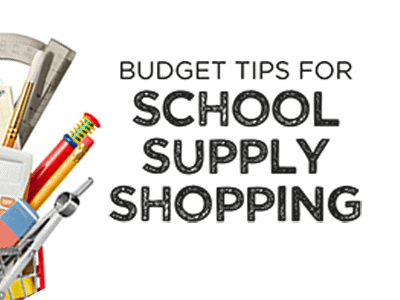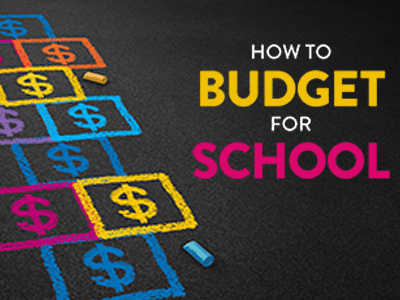It’s almost that time of year again … time for students to gear up to head back to school! While a new school year can be an exciting time for both students and parents, it can also be a stressful and expensive season. According to a survey by Communities in Schools, the average back to school costs exceed $1,000 per student. Take this opportunity to connect with your accountholders using timely and relevant back-to-school tips to demonstrate that your financial institution is there to support them.
To help you get started, our team has complied a few back-to-school tips you can share with your accountholders (adjust and make these your own!):
1. Review the school supply list
Most schools will provide a recommended school supplies list. Remind accountholders to get a hold of this list early so they can see what they already have versus what is still needed to purchase to cut down on extra spending and plan ahead accordingly.
2. Create a budget
Once all the school supplies needs are clear, it is time to make a budget. Not only should items for the school supply list be accounted for, but also items like seasonal clothing and shoes, backpacks and lunchboxes, electronics, and special equipment for after school activities such as sports, music etc. Accountholders should take a look at the entire school year to ensure a comprehensive budget is developed to cover all the expenses that might occur over the year. Encourage your accountholder to involve their children in this process of determining how much to spend on various items. Remind your customers of the importance of including children in these types of activities to teach them how far money goes in relation to their wants and needs and foster valuable money-managing skills.
3. Take inventory
It is likely that there is left over or re-usable school supplies around the house from previous school years. Remind accountholders to set aside time to figure out what they already have versus truly need. The best way to save may be not to spend at all so encourage your customers to check around their house before school shopping. Determine what is still usable for another school year versus what needs to be sold, donated or discarded.
4. Shop & sell secondhand
Take any outgrown or no longer needed, gently used items to a local consignment store to sell. Then use any money made toward this year’s school purchases. Remind accountholders that while selling their items they can also look at the consignment shop for affordable gently used school supplies and clothing to add to this year’s wardrobe. For those that have high school or college students, encourage them to purchase used textbooks when possible as well as sell any previous years’ textbooks that are no longer needed.
5. Shop after school starts
Skip the August shopping rush by having kids use what they already have for the first few weeks of school. It is likely to still be warm outside when school starts, so they can get away with wearing summer clothes. Waiting to shop will give kids a chance to see what’s really in style and what to wear this year and if any additional supplies are really necessary. Remind your accountholders that by waiting a few weeks until after school starts, they’ll also be able to take advantage of Labor Day sales as well as back-to-school clearance deals.
6. Look for bargains, use coupons & leverage student discounts
Local brick and mortar retailers will often have in-store only promotions that can be taken advantage of. Remind your accountholders to check their mailboxes for weekly coupons and store websites for printable or downloadable coupons. Whether shopping online or in store, encourage your customers to buy in bulk to reap the benefits of additional savings and prepare for future school supplies needs. Remind them to utilize student discounts whenever possible, particularly when considering purchasing expensive items (computers, tablets, printers etc.); point your accountholders to helpful student discount guides like this one from teachthough.com.
7. Shop during the sales tax holiday
Many states offer a shopping day or weekend during the summer which they waive state sales tax. Remind your accountholders of your state’s sales tax holiday and encourage them to shop on these dates to avoid state and local taxes, which can approach 10% in some states. See this chart from salestaxinstitute.com
for information regarding sales tax holidays for participating states.
8. BONUS TIP: Shop Local
Go the extra mile and take this upcoming back to school season as an opportunity to connect with your business customers, community retailers and small businesses. Inquire if they have any back-to-school sales, discounts or deals they’ll be running and offer to promote them to your accountholders through your financial institution’s channels. Encourage your accountholders to shop local for all their back-to-school needs.
To kick start your sharing back-to-school tips and related content, we’ve created some social media designs for you to download, brand and edit. As always, our designs are completely free for you to modify and use on your social channels.












